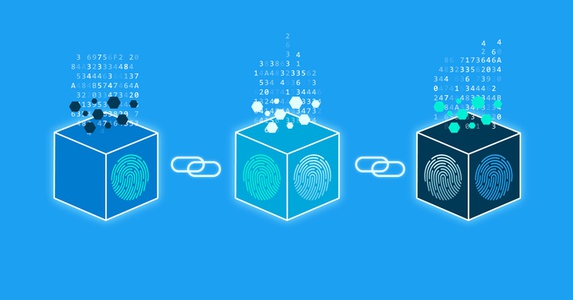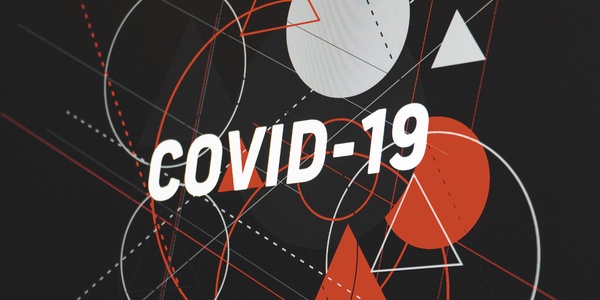

Difficulties in Blockchain Innovation Today
March 11, 2020, 9:51 a.m.Considering that the development of Bitcoin in 2009, blockchain has actually become a buzzword. Enterprises, regulative bodies, people, as well as scientists are interested by this inceptive innovation as well as are exploring its application within their particular fields. Blockchain is celebrated as a turbulent technological advancement due to its equitable offering: it is a dispersed ledger that documents and shops information once it has actually been verified by the computers or nodes on the journal's network. Every block of information that obtains included in the existing chain is backed by the principles of cryptography.
There are several advantages that arise from the above meaning of a blockchain, among the most admired being decentralization. A blockchain dis-intermediates the essential function played by central authorities and also 3rd parties in the confirmation and also validation of information or transactions, by enabling an open network of nodes do the essential tasks. This minimizes price, enhances efficiency, and also develops a trustless environment; benefits that can not be accomplished with manual, tradition processes. Openness is inherent in a public blockchain, since everybody on the network has access to the journal.
Every one of the above has resulted in blockchain being called Internet 2.0, and being discovered by 80% of the participating companies in the Deloitte 2019 Global Blockchain Study. Nevertheless, the technology brings a distinct collection of difficulties with it that have substantially added to its slow-moving adoption, consisting of absence of scalability, restricted interoperability, a dearth of blockchain programmers, inadequate standardization, comprehensive energy requirements, and the lack of governing clearness.
Difficulties of Blockchain Innovation
There are still particular challenges that blockchains have not yet conquered.
Scalability
Heritage purchase processing networks are recognized to process thousands of deals in a second. Conversely, blockchain networks are considerably slow-moving when it comes to deals per secondly. As a sign of the most popular public blockchains, the Bitcoin blockchain can process 3 to seven purchases per second, as well as Ethereum can handle around 20 transactions in a second. This efficiency, in contrast with their central equivalents, has actually deemed the innovation as non-viable for massive applications and also mass adoption.
Blockchain modern technology got traction by introducing decentralization and also transparency throughout numerous platforms, sustained by a huge network of nodes. A greater number of nodes enhances the merits for which blockchain is acknowledged as a revolutionary pressure. However, the majority of blockchains lack the capability of successfully sustaining a multitude of users, meaning that transaction throughput is much longer, and handling costlier.
To encourage mass scale fostering of this innovation, numerous services have been introduced that address the obstacle of scalability, with more in the pipeline. Lightning Network is a layer two method that offers off-chain settlement amongst the participants aimed towards the Bitcoin network to enable instant purchases with inexpensive and also faster processing times. Sharding is a remedy that teams subsets of nodes right into smaller networks or fragments which are after that in charge of the deals particular to their shard. It is pioneered by designers in Ethereum, and when offered together with the proof-of-stake consensus device, has the prospective to scale up the application.
Interoperability
With over 2,300 cryptocurrencies and hundreds of tasks that are leveraging dispersed ledger modern technology, numerous blockchain networks have drifted to the surface. Most of these blockchains work in silos and do not interact with the other peer-to-peer networks. There are no criteria that allow for seamless interaction between these blockchain tasks. According to Deloitte's record, over 6,500 jobs are leveraging a variety of blockchain systems with different procedures, coding languages, and consensus mechanisms. Such variant considerably decreases the extent of collaboration and also cross-blockchain purchases; nor can the existing blockchains promote data transfer in between chains or incorporate with typical platforms.
Over time, different projects have actually advanced to provide interoperability amongst different blockchain networks, such as Ark, which uses SmartBridges style to address this difficulty, as well as declares to give global interoperability, plus cross-blockchain communication as well as transfers. An additional is Cosmos, which makes use of the Interblockchain Interaction (IBC) procedure for sustaining blockchain economic situations to operate outside silos, and transfer files between each other.
Restricted Designer Supply
Every circumstances of groundbreaking modern technology needs time for the developer community to embrace it, and also for schools to introduce pertinent training courses. The blockchain landscape is currently in its early stage, as well as therefore deals with an acute lack of competent designers. The absence of an appropriately educated and also competent labor force for managing the intricacy of peer-to-peer networks further translates right into a sluggish price of innovation.
Other than software and hardware, blockchain innovation requires added certification as well as expertise. According to research study carried out by Glassdoor, the demand for blockchain tasks enhanced by 300% between 2017 as well as 2018. Simultaneously, the Upwork Skills Index showed that blockchain was the second-fastest-growing skill sought by employers in 2017. These statistics denote the tremendous existing need for blockchain developers and also various other experts. This space between the demand and also accessibility of appropriately knowledgeable sources has caused greater than typical wages within the market, making its execution a lot more hard.
Standardization
With the wide variety of networks that exist today, there are no universal criteria for blockchain applications. Standardization can help reduce costs, develop a lot more effective agreement systems, as well as introduce interoperability. The lack of such uniformity across blockchain procedures further intensifies the issue of onboarding brand-new designers, plus it likewise takes away uniformity from standard procedures like security, making mass adoption a nearly difficult job. This has come to be a barrier to access for specialists as well as investors.
To develop industry-wide standards when it come to various blockchain protocols, Ethereum launched Ethereum Request for Comments (ERC) under which a memorandum gets issued to explain the actions or application, or methods of protocol execution. For example, one of the most preferred requirement is ERC 20, for token agreements (similarly, ERC 137 is for name computer registries). Ethereum Enhancement Protocols (EIPs) EIP 75 and also EIP 85 are for pocketbook styles, standing for criteria that need to be followed by the platform, such as core protocol specs, smart agreement criteria, as well as customer APIs.
Energy-Intensive
Proof-of-work (PoW) was the initial agreement device for confirming transactions and also removing the requirement for centralization, and also was introduced by Bitcoin's blockchain. These methods call for individuals to send evidence of 'work' by addressing complex mathematical problems, and call for remarkable computer power. While proof-of-work paves the way for disintermediation by using a trustless and also dispersed agreement, it likewise consumes massive amounts of energy. Experts have actually additionally called out that by 2020, Bitcoin deal energy consumption can soar as high as the yearly power use of Denmark.
In an attempt to conquer these difficulties and also provide a trustless agreement device, proof-of-stake (PoS) methods were presented, that involve a mix of a participant's risk in the network as well as an algorithm to randomly appoint the task of recognition to a node. Considered that the participants are not needed to solve complex challenges, these devices significantly minimize energy intake.
Rules
Given that 2009, international ventures and media residences have highlighted a lack of regulative clarity regarding cryptocurrencies, and also consequently in the underlying blockchain technology, which is a considerable roadblock for mass adoption. Whilst blockchain ventures are trustless and decentralized, there are particular areas that need regulatory assistance, of which wise contracts is one. These are self-executing agreements that run on peer-to-peer networks and also make sure automated implementation of the agreement when specific predefined conditions are satisfied. If the laws do not cover clever contracts, it prevents fostering along with financial investment in the blockchain market.
Throughout the years, there has actually been some development on the regulative front. According to a study by Deloitte, 17 U.S. state legislatures have actually passed bills concerning the adoption of blockchain. Furthermore, a number of other nations are formulating blockchain-friendly regulations to take advantage of the qualities of this modern technology, including Malta, Estonia, Switzerland, Singapore, and Japan.
Final thought
Blockchain innovation has actually geared up the world with an innovative interruption that can be explored across a vast array of sectors, yet it comes with its own collection of difficulties which all add to the lag on the course to mass fostering. Gradually, active and also measured steps are being carried out to remove these obstacles, and also maintain the trajectory of blockchain adoption pointing upwards.
* The information above does not constitute any form of financial or investment advice and should not be relied upon. Investing in Digital Assets carries risk
Got another minute? Check out:


COVID-19 & Data-enabled healthcare initiatives

COVID-19 and digitalisation: 4 areas of tech set to boom post-pandemic

What COVID-19 Means for Ecommerce Startups


COVID-19 and the Future of Globalization

5 Ways Blockchain Tech Can Help Us During This Pandemic

Business Implications of Covid-19.

Businesses to survive the Covid-19 crisis

How will blockchain technology help to reduce the damage due to COVID-19.
